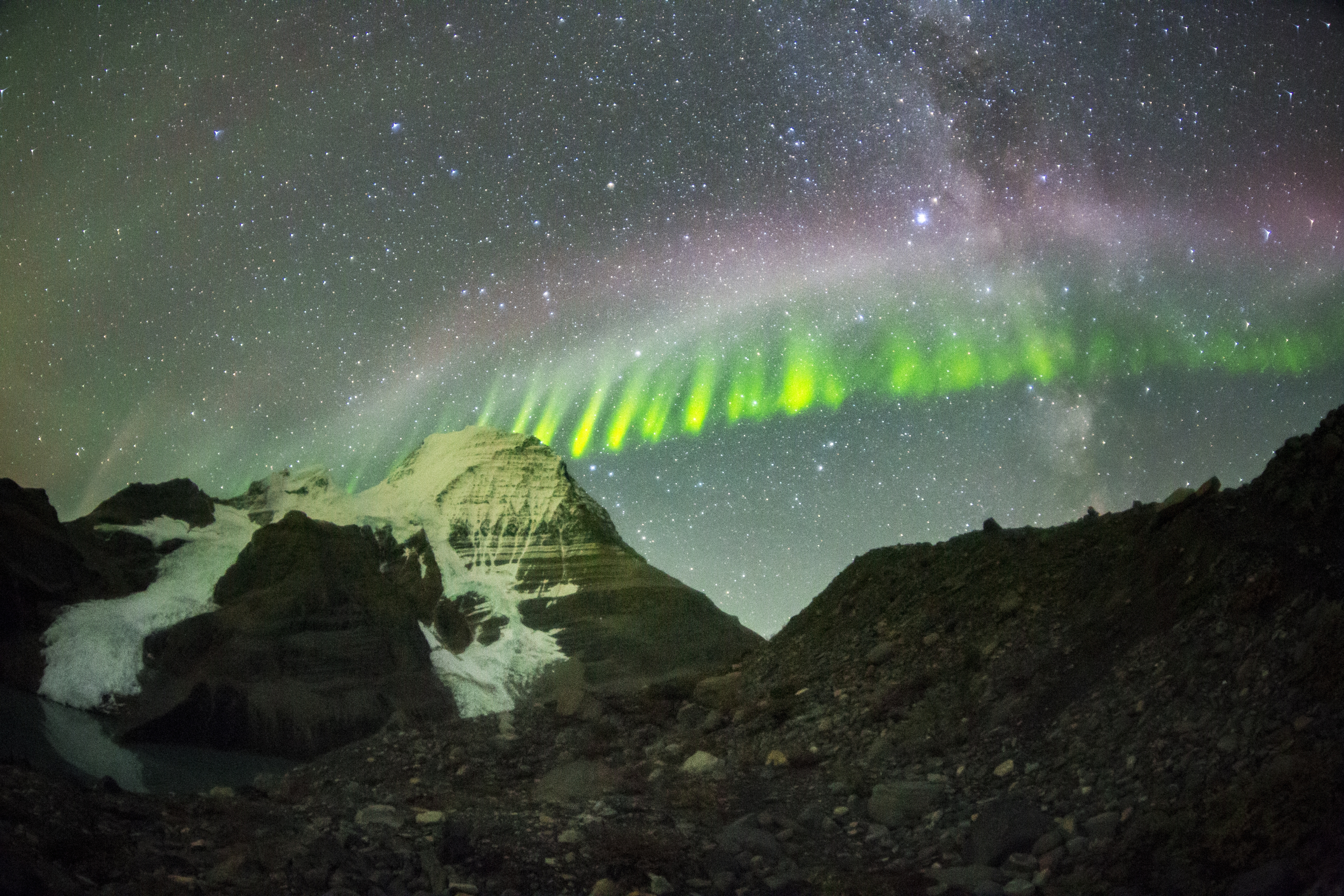When amateur aurora photographers noticed a type of light in the sky no one had reported before most people assumed they had found a new sort of aurora. However, an alternative explanation attributes it to such different causes the scientists responsible see it as something separate, not a subtype of what we already know. Some have proposed an experiment that could prove they’re right.
Upon discovery, the phenomenon was named Steve (now STEVE) to avoid the risk of giving it a name that would turn out to misdescribe it, as had occurred previously with the so-called Stable Auroral Arcs, which are not auroras at all.
STEVEs look different from auroras, with a characteristic mauve arc rather than a range of flickering colors. Both follow solar storms, however, leading physicists to assume they had common origins in charged particles from the Sun slamming into the upper atmosphere.
However, Claire Gasque, a graduate student at the University of California, Berkeley, didn’t come to studying STEVEs from a background in aurora research. Instead, she was doing her PhD on how volcanoes affect the ionosphere when she heard about STEVEs at a conference.
Gasque learned of a hypothesis proposing STEVEs are caused by electric fields running parallel to the Earth’s magnetic field. This would explain why STEVEs, and the apparently related “green picket fence”, occur further from the poles than true auroras.
However, Gasque said in a statement, “This would upend our modeling of what creates light and the energy in the aurora in some cases.”
“Collectively, this suggests that the picket fence might represent one example of a class of aurora-like emissions generated locally by parallel electric fields, not magnetospheric particle precipitation, although the sources of these fields may differ,” Gasque and co-authors write.
Electric and magnetic fields usually run at right angles to each other, so the idea of them running parallel sounds like a non-starter. However, Gasque has shown theoretically that moderate electric fields parallel to the Earth’s magnetic field should be able to exist at altitudes of around 110 kilometers (70 miles) when neutral atoms act as an insulator. If so, these would excite the sparse oxygen and nitrogen molecules present at that height, and produce a light spectrum similar to what has been observed for green picket fences.
“If you look at the spectrum of the picket fence, it’s much more green than you would expect. And there’s none of the blue that’s coming from the ionization of nitrogen,” Gasque said. “What that’s telling us is that there’s only a specific energy range of electrons that can create those colors, and they can’t be coming from way out in space down into the atmosphere, because those particles have too much energy.”
Therefore, Gasque reasoned, the light must come from local particles energized by something, which she thinks is a parallel electric field. If such fields can create the picket fence, then it seems likely they are also responsible for STEVEs, which are usually seen with them. Gasque and colleagues have predicted STEVEs should be accompanied by ultraviolet emissions at specific frequencies.
Although picket fences and STEVEs have been seen at lower latitudes than auroras, both occur during geomagnetic storms after outbursts on the Sun, suggesting a connection. However, Gasque proposes these storms create the conditions in which electric fields can accelerate particles to produce other sorts of lights.

STEVEs are frequently seen with the green picket fence phenomenon, suggesting a common cause. This image shows a particularly close alignment.
Image credit: Libor Fousek/Shutterstock.com
It’s all very well to come up with an alternative explanation, but the essence of science is to test things. Gasque and colleagues propose that by firing rockets at true auroras and suspected aurora-like phenomena, it should be possible to test their similarities and differences.
Launching rockets into the ionosphere is a bit beyond the average graduate student’s budget, so Gasque has teamed up with researchers at the Berkeley Space Sciences Laboratory to try to persuade NASA this is a project worth exploring.
“It’s really cool,” Gasque said. “It’s one of the biggest mysteries in space physics right now.”
Even at times when the Sun is active, like at the moment, auroras are hard to predict, and if STEVEs were common we’d have discovered them long ago. The team propose launching a rocket from Alaska to pass through an enhanced aurora – a normal aurora with features that resemble the picket fence occurring within it.
The rocket would test if the parallel electric fields are real, and if so, how strong they are. Additional rockets would fly even higher to observe the true auroras for comparative purposes. Observing STEVEs directly would require keeping a rocket on stand-by for a very long time, waiting for the right moment to launch, but the authors hope for this eventually as well.
The study is published in Geophysical Research Letters.
Source Link: Rockets Could Reveal STEVE Is Not A Real Aurora